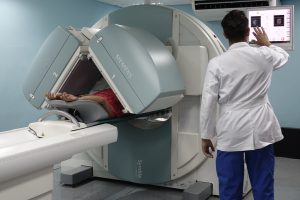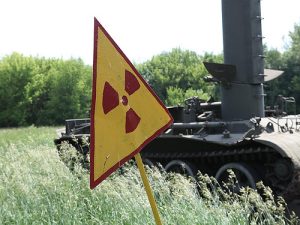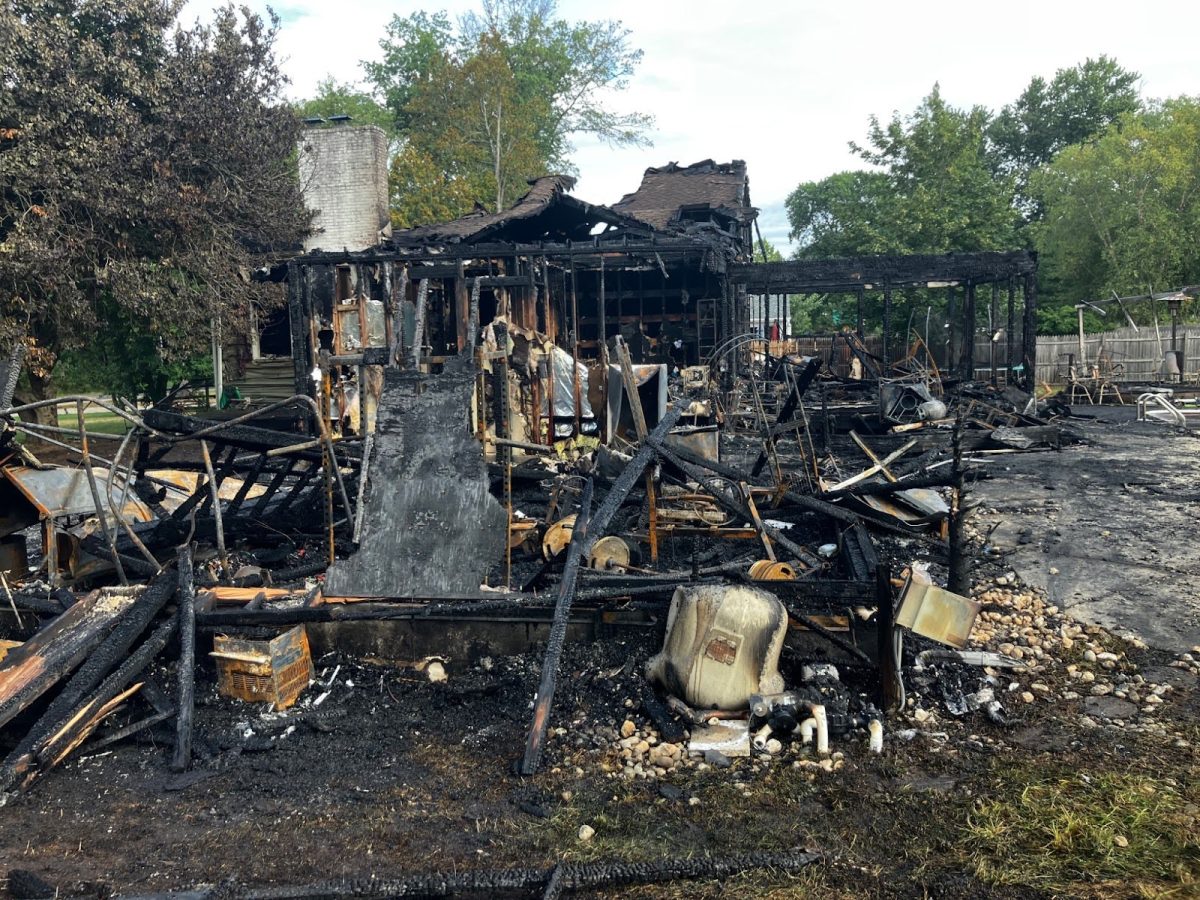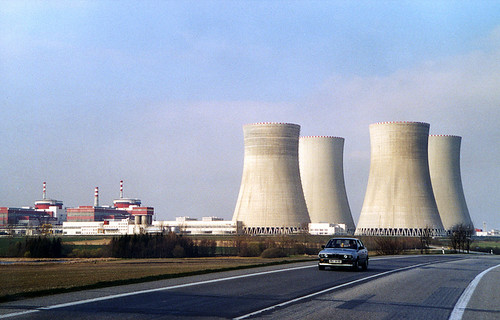What is Nuclear Energy and How is it Used?
In buildings such as schools, businesses, and hospitals, how do people obtain electricity that enables daily functions to be carried out? The answer is quite simple. Nuclear energy is the main source that enables electricity to be generated in developed countries. There are two methods for producing nuclear energy: fission and fusion. In the nucleus of a uranium atom, the main source of fuel in nuclear energy, bonds between the protons and neutrons emit tons of energy in the form of heat and radiation when broken. This process is called fission, which ultimately enables buildings to obtain electricity. Furthermore, neutrons are released and they collide with other uranium atoms to sustain the substantial amount of energy generated. This is commonly known as a nuclear chain reaction. On the other hand, fusion is the opposite of fission as it involves the merging of smaller atomic nuclei. Only in the sun and stars can fusion be a viable source of energy. This is because fusion reactions are generally more difficult to control than fission, which currently makes it a non-feasible source of electricity. However, scientists are working on developing technologies at present to effectively manage the exorbitant amount of energy that is utilized.
General Benefits of Nuclear Energy
Nuclear energy delivers several key benefits that make it a necessary investment for a nation. In the United States, 775 billion kilowatts of electricity are generated annually and supply half of the nation’s clean electricity supply. This in turn reduces carbon emissions by 471 million metric tons, contributing to a cleaner environment. In addition, humanity receives some benefits from this energy source, such as supporting nearly half a million jobs in the United States and local economies through revenue. Since the United States is the world’s largest producer of nuclear energy, it is a major influence on other nations to use nuclear energy peacefully, resulting in support for national security as well. Another key benefit attributed to nuclear energy is its many forms of application, including space exploration, agriculture, and even medicinal technology.
Space Exploration
NASA is currently exploring two propulsion systems which are nuclear thermal and nuclear electric. As stated before, fission generates energy in the form of heat. In the nuclear thermal propulsion system, fission enables the heat to transfer to a flowing liquid propellant, which eventually becomes a gas. Then, the gas expands through a nozzle to propel the spacecraft, which is twice as efficient as chemical rockets. In contrast, the nuclear electric propulsion system would generate heat and electricity, while also ionizing a gaseous propellant and accelerating it electromagnetically, allowing for the spacecraft to exit Earth’s gravitational field. Both forms allow a longer duration of space travel.
Agriculture
Nuclear technology plays a vital role in improving the agricultural industry. For instance, a process called food irradiation allows the crops to be exposed to ionizing radiation. This, in turn, enables the crops to be protected from harmful organisms, such as insects and bacteria that carry diseases. Ultimately, these harvested crops live longer and are safely traded among foreign nations. Food irradiation is demonstrated to be beneficial for rural communities because it is environmentally friendly, and farmers use less fertilizer, which preserves water supplies. Not only does nuclear technology ensure the safety of products people consume, but it is also crucial for combating nutrition-related issues, including obesity and malnourishment. In both situations, nuclear technology fuels a process called deuterium dilution, which is when the patient drinks water filled with deuterium. This in turn, enables scientists to assess the body-mass-index (BMI) of the patient’s body and create suggestions, regarding the patient’s dietary needs.
Diagnosing

Nuclear energy effectively fuels up radioactive tracers such as the Single Photon Emission Computed Tomography (SPECT) and the Positron Emission Tomography (PET scans). These technologies assist doctors in diagnosing and treating diseases by assessing the source of these health issues. SPECT displays 3D images in which gamma ray detectors are installed to detect the gamma ray emissions that are injected into the human body. Meanwhile, PET scans detect photons (Particles of light instead of radiation) instead of gamma rays. This process is achieved by having the positron (Same mass but opposite charge of an electron) react with electrons to produce energy. This in turn, enables visual images to be created of 3D organs which allows the doctors to evaluate the main cause of these diseases.
The Consequences of Nuclear Energy
Although nuclear energy delivers a variety of key benefits, it imposes several repercussions simultaneously. Specifically, these drawbacks pertain to the environmental and human risks that can cause long-term changes to the biosphere. These issues stem from water pollution, the failures of managing nuclear wastes, and nuclear disasters.
Water Pollution
Generating nuclear power involves the use of water, which is crucial for mass cooling that prevents meltdowns or overheating. Nuclear power plants take in large amounts of water to absorb the heat generated from electricity. Afterwards, it releases the heated water back into nearby lakes and rivers. This in turn raises the temperature of the water and negatively affects the aquatic organisms that reside in the area because of the decline in survival rates for various reasons. For instance, higher temperatures lead to an upsurge of harmful algae which produce toxins to kill a vast amount of marine organisms. In addition, radioactive wastes that are disposed of can contaminate the water and soil due to leaks or failures. These failures would not only harm aquatic ecosystems, but drinking water would be contaminated and unsafe for humans as well. Although these effects are difficult to control, continued research for mitigating the damaging effects of radioactive waste is still being pursued.
Impacts of Nuclear Wastes
Since the nuclear wastes have a prolonged half-life, they pose a threat to human lives. These wastes include high-level radioactive wastes, low-level radioactive wastes, and uranium mill tailings. High-level radioactive wastes contain byproducts that form from fission. These byproducts are temporarily stored in a pool at the nuclear power plant, which provides cooling to prevent overheating, or meltdowns. After one year passes, these wastes move to a dry cask which is composed of steel cylinders within a large steel or concrete container. In countries such as the United Kingdom and China, the usable fuel is collected from the waste, which in turn, reduces the amount of geologic storage. Although this process seems advantageous, there are underlying issues including potential accidents that could be caused by the unsafe transportation of these harmful wastes and nuclear proliferation. Meanwhile, low-level radioactive wastes provide harmful consequences, although not to the same extent as high-level wastes. However, these wastes can still contaminate groundwater if the drainage systems in the disposal sites are faulty. Furthermore, uranium mill tailings, byproducts of using uranium, are also hazardous to the environment, and have no upside as they can not be repurposed into usable energy. This is because these substances contain radium that produces radon, a radioactive gas. As a result, these environmental effects ultimately alter the biosphere and pose long-term health risks.
Nuclear Disasters

Because of the contamination of the air and water, the chances of an uncontrolled reaction such as a meltdown are unreasonably high. Nuclear accidents at Three Mile Island, Chernobyl, and Fukushima highlight potential dangers, regarding the safety of nuclear energy. In Three Mile Island, Pennsylvania, there was a meltdown that occurred from electrical failure. Although no lives were directly lost from the electrical failures, potential rates for cancer allegedly increased, which indirectly contributed to numerous deaths. In contrast, at the Chernobyl nuclear power plant in Ukraine, a meltdown occurred due to the failure of the emergency systems, which directly killed fifty people and an estimated 40-60 thousand lives after the incident that emitted radiation. More recently in Fukushima, a subsequent earthquake and tsunami occurred because of the cooling systems being disabled, which in turn caused a meltdown. Not only were many lives lost from this catastrophic meltdown, but the Japanese government was also forced to spend $300 billion in reparations. These events underscore the need for improvements in managing nuclear energy through extensive research. As this process continues, scientists will need to analyze the impacts of nuclear energy in order to innovate a cohesive strategy that can effectively mitigate the potential consequences.
History of Nuclear Energy: An Overview
The science of atomic radiation and nuclear fission has seen its debut in 1895. Between 1895 and the present, the world has witnessed tremendous progress in this specific field, questioning whether fission would be used for warfare or enhancements in certain industries such as medicine and manufacturing. Although the first use of nuclear energy was during 1895, the history of this topic can be traced back to 1789, where uranium was first discovered.
Early Discoveries of Nuclear Energy
In Germany, a chemist named Martin Klaproth isolated an oxide of uranium as he analyzed pitchblende (An ore composed of uranium and radium) samples located in the silver mines in present-day Czechia. He named his discovery “Uran” after the planet Uranus. In 1895, Wilhelm Rontgen passed an electric current through an evacuated glass tube and created self-sustaining x-rays, soon titling it ionized energy. Following this discovery in 1896, Henri Becquerel determined that the pitchblende samples caused photographic plates to darken since they emit alpha particles (helium nuclei) and beta particles (electrons). Along with alpha and beta particles being emitted, gamma rays are also released as discovered by Villard. A gamma ray is a form of light that moves at a different wavelength than a normal visible light. Pierre and Marie Curie labeled this as ‘radioactivity’ to this phenomenon.
The Spark of Nuclear Experiments
In 1902, Ernest Rutherford demonstrated that radioactivity ultimately created new elements during chemical reactions, later confirming it in 1919, where nitrogen was bombarded with alpha particles to create oxygen. In 1932, the neutron was discovered by James Chadwick and this sparked numerous experiments. Cockcroft and Walton created nuclear transformations by adding atoms with accelerated protons. Two years later, Enrico Fermi discovered that some nuclear transformations could produce artificial radioisotopes using neutrons, which stimulated the creation of these artificial radioisotopes more than protons. This breakthrough was further demonstrated in practice in 1938, when Otto Hahn and Fritz Strassman concluded that the neutrons, captured by the uranium nucleus, ultimately led to the splitting of the nucleus into unequal parts, including barium.
Prospect of the Atomic Bomb
The concept of fission was revolutionized by Niels Bohr’s idea of using slower-moving neutrons as they sustain chain-reactions and employing uranium-235 as it would increase the chances of atomic fission to occur. In 1939, Francis Perrin proposed that employing a water-uranium mixture would slow down neutrons. These neutron-regulating materials are necessary for controlling the amount of neutrons and allowing for sustained reactions to occur. That same year, Werner Heisenberg, a German scientist, suggested that using uranium machines would generate energy with the use of pure uranium (uranium-235) and increase the potency of nuclear weaponry, and Carl Friedrich noted that plutonium would be made from uranium-238. Resulting from such breakthroughs, the initiative of creating nuclear weapons in Germany soon prompted Britain and the USA to create their own atomic bomb. The British proposed that Plutonium, which is generated from uranium-238, is more reliable than uranium-235 since it has a longer half-life (the amount of time it takes for half of the substance to decay). This means that plutonium would be more available for fission, ultimately sustaining the nuclear reaction.
Research Heads Into Detail
To further stimulate nuclear research, the MAUD committee was established to supervise atomic testing at prestigious universities. This committee soon published two reports centered around uranium being used for the bomb project, and the utilization of uranium as a source of power. The first report elucidated that gathering the materials to create the bomb requires a hefty cost and that it would require a skilled labor force to facilitate the creation of this weapon. This led to the conclusion that the support of the Americans was necessary for ensuring a secure lead in nuclear warfare over the Germans. As for the second report, it mentioned that uranium serving as a source of power would need moderators for fast-moving neutrons, including water, and plutonium is a more suitable alternative to uranium-235. Americans responded by initially emphasizing nuclear power; however, the Japanese attack on Pearl Harbor made the bomb proposal more of a pressing concern.
Manhattan Project and Aftermath

The Americans continued to rapidly pursue their research of developing a nuclear bomb in which they outstripped the British. At prestigious universities, capable researchers studied electromagnetic separation, centrifuge method, and gaseous diffusion work. The ultimate task of developing a nuclear reactor that generates fissile plutonium was handed to Arthur Compton at the University of Chicago. Despite America being assigned to process development, engineering design, site selection, and heavy water, Winston Churchill, the prime minister of Britain, sought to build a heavy water plant and a nuclear reactor as information flow had slowed down. Because of this, an agreement was eventually formed in which Britain would send its numerous reports to America in exchange for America delivering progress reports written by General Groves. Eventually in 1942, the first controlled nuclear reactor was created at the University of Chicago. A Plutonium reactor was constructed at Argonne as well as four heavy water plants. Since America had a sufficient amount of resources, Robert Oppenheimer and his team had created U-235 and Pu-239 bombs in Los Alamos, New Mexico. In 1945, the first successful atomic bomb was created, with the use of Pu-239. In the same year, America bombed Hiroshima and Nagasaki with two bombs, which in turn, caused the Japanese government to surrender, which ended World War 2. However, this would allow the Soviet Union an opportunity to replicate the same success as the Americans and ultimately, lead to more cataclysmic damage.
The Soviet Union Gets Its Hands On the Atomic Bomb
As soon as Stalin, the dictator of the USSR, received word that the United States, Britain, and Germany conducted research on developing nuclear weapons, he reciprocated this by appointing Igor Kurchatov to become the head director of this project. The research had three main desires which were: to create a controlled chain reaction, find methods of isotope separation, and enrich (Higher concentration of U-235) uranium and plutonium bombs. During 1945, the Soviet Union made moderate progress in finding methods of isotope separation, which was the gaseous diffusion method. In addition, the process of enriching uranium had some progress as the first gaseous diffusion plant was built. After the bombing of Imperial Japan, the Soviet Union made tremendous progress by constructing nuclear cities, one of them being Chelyabinsk, which housed the first plutonium production reactor. In April of 1946, the research had shifted to the nuclear center of Design Bureau-11, which provided the graphite needed for plutonium production. Three years later, the RSD-1 nuclear bomb was assembled in which it was heavily influenced by the bomb that was used in Nagasaki. Prior to the detonation of this bomb in Semipalatinsk, research for creating a hydrogen bomb was conducted by Igor Tamm and Andrei Sakharov.
Reappearance of the Nuclear Boiler
Along with the development of weapons on both sides of the iron curtain, nuclear energy was used in positive aspects, including steam and electricity. Steam boats, for example, served as an application for harmless use of nuclear energy as it facilitated the shipping of goods. Dwight. D Eisenhower sought to use atomic energy peacefully through his campaign, “Atoms for peace.” Simultaneously, the Soviets developed the AM-1 (Atom Mirny-Peaceful atom), which not only was crucial as a prototype for graphite reactors, but it generated electricity. During the Cold War, both the Soviet Union and the United States created nuclear technologies that fueled up their navies. In the USSR, the sodium-cooled FBR’s were upgraded to the BR-10 (BR stands for Breeder Reactor), whereas America generated pressurized water reactors (PWR), one of them being the Mark 1 Prototype.
Widespread of Nuclear Energy
The United States pursued the extensive use of PWR and BWR reactors. Several other nations across the world began to use nuclear energy, whether it would be for the same purposes as the United States, or other occasions. For instance, Canada used natural uranium fuel and heavy water as a moderator and coolant to prevent any meltdowns; meanwhile, France generated PWR reactors, similar to the United States. Meanwhile in Kazakhstan, the world’s first commercial fast neutron reactor (BN-350), was produced in which tons of electricity and heat were generated as well as removing salt from the Caspian sea. The majority of nations that use nuclear energy worldwide, mainly pertains to PWR (Light-water reactors), rather than BWR reactors since it is easier to maintain.
Modern Change in the Industry
From the 1970’s-1980’s, the nuclear industry suffered a downfall, in which the demand rate was low as few reactors were ordered. This caused the uranium prices to drop, meaning that the producers received less money. Despite these shortcomings, there was a one-third increase in capacity and the output nearly increased by 60 percent. However, when Japan developed an advanced model of the BWR during the 1990s, the nuclear industry recovered and in fact, reached new levels of significance. Several examples include electricity being a more prominent worldwide demand, recognizing the importance of having electricity in developed countries, and the necessity of decreasing carbon emissions. Rather than the Americas and Europe dominating the nuclear industry similar to the past, it is now China and India that overshadows these two continents. In fact, China itself features more than one hundred large units, proposed and supported by popular support as well as political.
Current Solutions In Nuclear Energy
As the developed world continues to employ nuclear energy in certain industries, countries are currently investigating solutions that effectively combat the repercussions that are imposed, which pertain to safety risks. Specifically in the United States, solutions include developing advanced SMRs (Small Modular Reactors), plant life extension, and radioactive material management.
Advanced SMRs
The SMR is an advanced nuclear reactor that has many forms of application including “power generation, process heat, desalination, or other industrial uses” (Advanced Small Modular Reactors (SMRs)). In addition, SMR reactors usually employ light water as a coolant, similar to PWRs. Several benefits include resolving many technical and licensing issues, while also providing an abundant supply of clean energy. Currently, the Department of Energy endorses this proposal since they recognize that this reactor will benefit domestic nuclear production as well as providing significant economic benefits, including increased production in the nuclear industry. In addition, the department is invested in experimenting with the prospect of liquid metals, salts, and gases as coolants. Since these reactors provide coolants that prevent meltdowns and release clean energy simultaneously, this proposal improves the overall safety conditions.
Plant Life Extension
Extending the nuclear plant-life is crucial for the US economy, since this solution is inexpensive in comparison to replacing aging nuclear power plants. Through inspections conducted by the Nuclear Reactionary Committee (NRC), the key aspect of safety is emphasized as nuclear power plants will need to demonstrate how extending the plant life can be managed safely. The committee thoroughly inspects certain aspects of the plant such as system metals, electric cables, and welds and piping before licensing it. In addition, the committee provides several safety enhancements, pertaining to flood and seismic protection. In other words, by incorporating this proposal, safety measures are fostered by the NRC, which in turn, decrease the chances of nuclear disasters.
Radioactive Material Management
The United States has entrusted several governmental organizations, and state governments to monitor the use of nuclear energy in order to benefit the safety of the public. The U.S Environmental Protection Agency regulates the air emission and drinking water standards in terms of radioisotopes, meanwhile the Food and Drug Administration uses linear accelerators to create radioisotopes used in certain medicines. However, the NRC has a larger role, when it comes to the safety of nuclear energy. Not only does this committee conduct thorough inspections to ensure the secure conditions of the plant, but it also monitors the materials that are used and prevents nuclear proliferation. As for state governments, they comply with and enforce the Atomic Energy Act, which promotes the use of nuclear energy for peaceful purposes. The states that monitor radiation, also called the ‘Agreement States’, regulate all-naturally occurring radioactive substances such as radon and radium. However, these states cannot store large amounts of nuclear waste as they generally do not contain nuclear power plants.
Conclusion
Throughout the course of employing nuclear energy, economies across the world have benefited worldwide. Although its primary purpose is generating a substantial amount of electricity to generate power for buildings universally, there are more forms of application that can not be overlooked. In fact, history showcases the value of nuclear energy across certain nations, whether it is for military purposes or advancing certain technologies that contribute to cleaner environments and produce substantial amounts of electricity. Despite its vast advantages, the safety conditions of using nuclear energy are still scrutinized, whether it’s by governmental organizations or thorough research from prestigious universities. To this day, nuclear energy can impose critical health risks to aquatic life and humans, plus stimulate nuclear disasters. However, nations including America are proposing various solutions, backed up by thorough research to promote progress worldwide and to ensure the safety of not only workers, but the general public as well. Critically understanding the impact of nuclear energy enables members of a society to promote progress and become educated about proposals, pertaining to the environment.






















